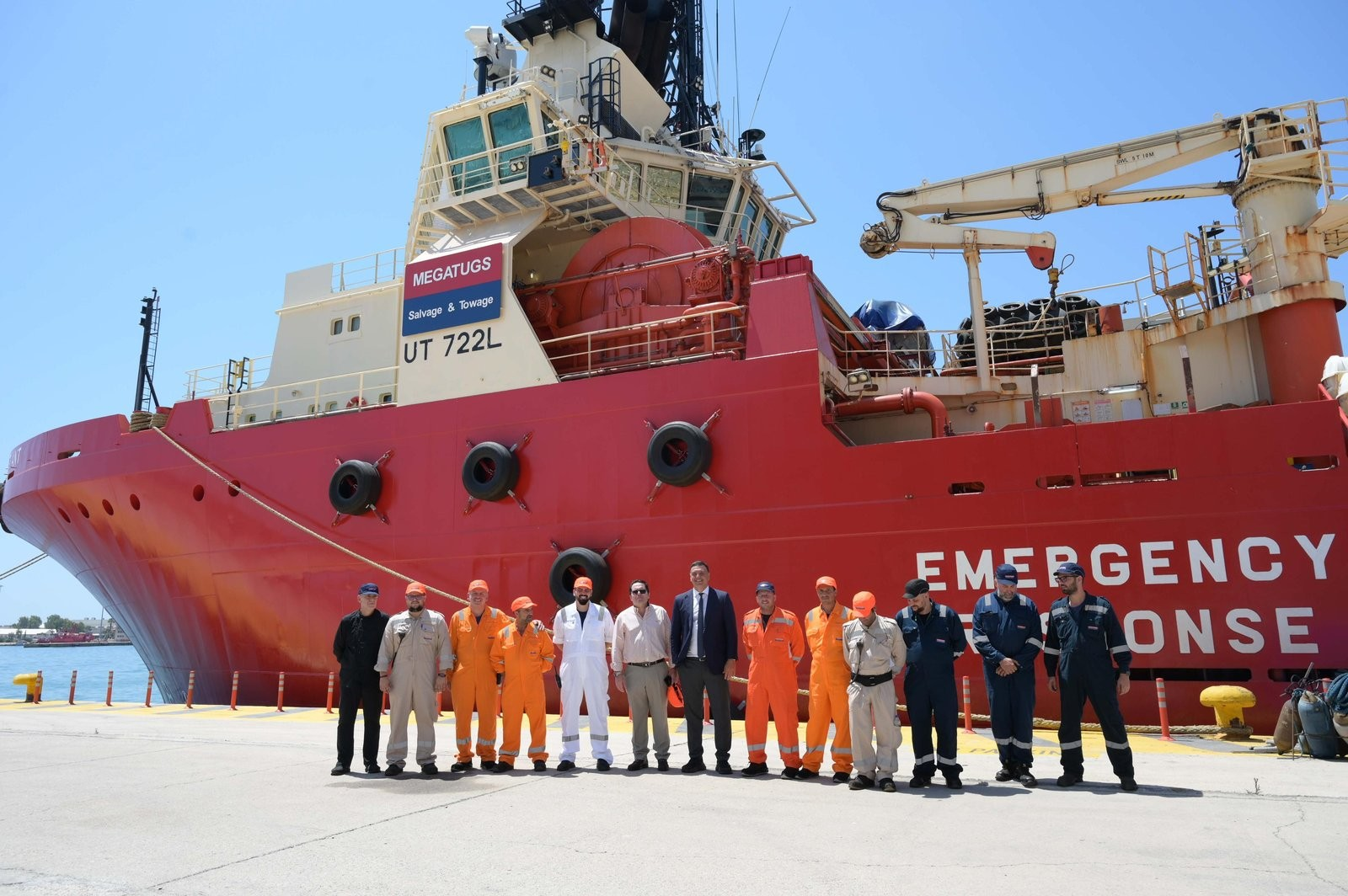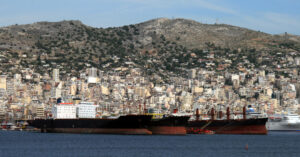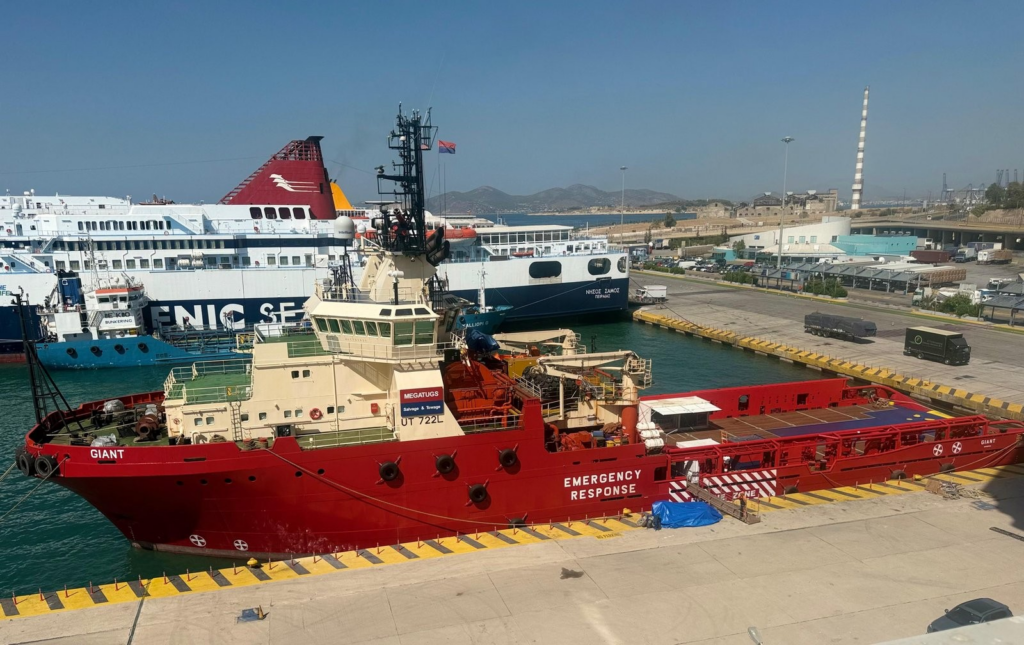
Greece is sending a powerful anchor handling tug supply vessel to the Red Sea to enhance the safety of maritime operations and assist Greek-owned vessels and its seafarers, after the attacks on two Greek vessels by Yemen’s Houthis this month.
The Giant is crewed by 14 experienced Greek sailors and equipped with four engines delivering 16,000 horsepower, allowing it to operate under extreme weather conditions.
Certified by an IACS classification society, the vessel can assist ships in danger, prevent and deal with marine pollution, protect human life (by rescuing passengers and shipwrecked individuals) and can participate in search and rescue operations.
It also has firefighting capacity (level 2, which means providing 7,200 cubic meters of water per hour, at a distance of 200 meters) with a self-protection system throughout the ship, rescue zones, accommodation for 40 people with the ability to host a salvage team and survivors, as well as hospital care.
It also carries modern salvage- anti-pollution equipment with the ability to provide anti-pollution action as well as power supply to damaged ships, support for wreck recovery, as well as space for helicopter operations (winch only) and storage of salvage equipment.
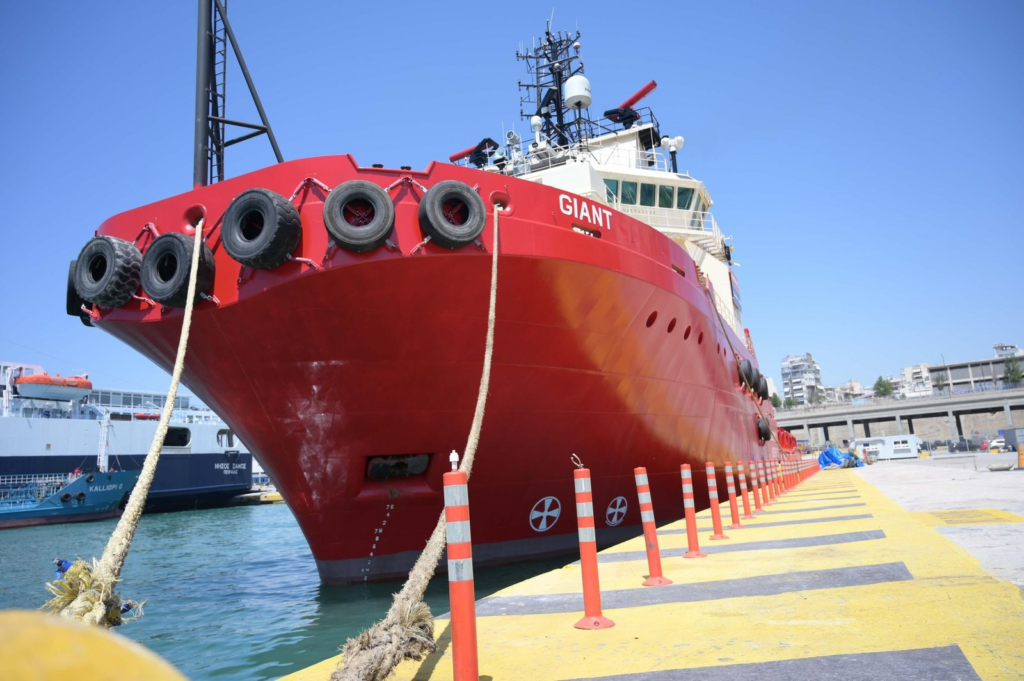
Touring the tug on Wednesday, Greek minister of maritime affairs and insular policy Vasilis Kikilias said the vessel – called Giant with the collaboration of the Hellenic Shipowners’ Association of Tugs, Salvage, Antipollution and OSVs – would head to the Red Sea to “support, protect and assist Greek-owned vessels and Greek seafarers.”
During his visit and tour of the Giant in the port of Piraeus in the presence of the president of the Hellenic Shipowners’ Association of Tugs, Salvage, Antipollution and Offshore Support Vessels, Paul M. Xiradakis, Kikilias noted that the Greek shipping ministry “supports this effort and the collaboration between the public and private sectors, always at this level—of safety, the protection of human life, and measures against sea pollution. All these are extremely important and at the heart of our policy.”
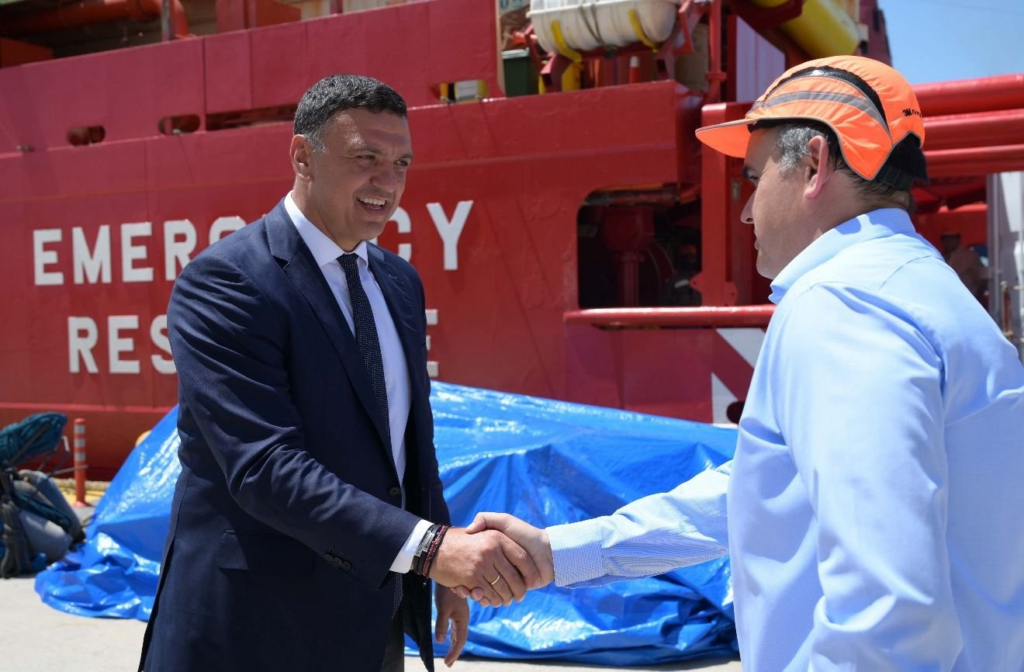
Photo: Greek minister of maritime affairs and insular policy Vasilis Kikilias (left)
It is noted that the Giant, following the initiative of the Hellenic Shipowners’ Association of Tugs, Salvage, Antipollution and OSVs, in collaboration with the Greek ministry of maritime affairs and insular policy and given the critical situation prevailing in the Red Sea, will be dispatched to the area to assist in maritime accidents, protect human life and the environment, and support global shipping.
Following is the statement of the president of the Hellenic Shipowners’ Association of Tugs, Salvage, Antipollution and Offshore Support Vessels, Paul Xiradakis:
“Minister, we would like to welcome you to the salvage vessel “Giant”. Initially, I wanted to say that – after the discussions we had – our Union and its members, recognizing the critical situation prevailing in the Red Sea, decided to send this salvage vessel to the area to assist in maritime accidents, support global shipping, protect human life, and the environment. There is no other salvage vessel in the area. Last time, and in the rescue of the “Sounion”, again a Greek salvage vessel departed from Piraeus, in order to rescue this ship, because no one wanted to go to the area due to the dangerous situation. So now, we decided, seeing that the situation continues and worsens, to send this salvage ship to the area.
“We would like to thank you for your assistance and the response you always show to our sector, which is trying to modernize and upgrade safety in Greek seas but also to prove that Greek shipping, even in this field, is a pioneer. This specific ship is one of the largest in the world.
“It has a total of 16,000 horsepower across four engines, two propellers, a towing capacity of 180 tons, can operate under the most adverse weather conditions, has a “Level 2” firefighting system – very few rescue vessels in the world are equipped with such a system – which means providing 7,200 cubic meters of water per hour at a distance of 200 meters, aids in extinguishing fires especially on ships that have very high superstructures—such as market containers—features modern rescue equipment, diving equipment, can accommodate survivors, has a hospital area, and lodging for 40 people.
“And in an operation, this is very crucial because, beyond the crew, there are rescue teams and authorities that need to be accommodated in an incident, which may be in an area without access to land. The crew consists of 14 Greek sailors who, I won’t hide it from you, always operate even in the most difficult situations. Today, as you see, other flags are urging sailors not to pass through the Red Sea with their ships. Our people are willing to go to this area, despite the prevailing situation, to assist and help fellow sailors who are there.”

